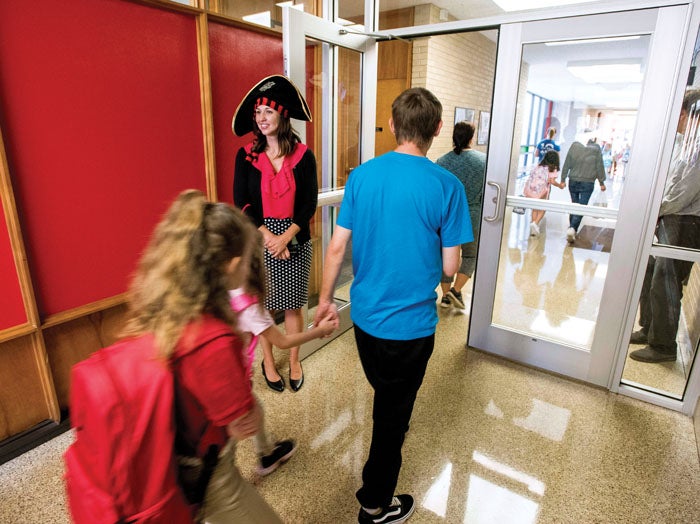Editorial: Disliked option may be best for students returning in fall
Published 12:00 am Wednesday, July 1, 2020

- JON C. LAKEY/SALISBURY POST FILE PHOTO - Overton Elementary School Principal Candice Austin greets students and parents dressed as a pirate in August 2019.
It’s somewhere between difficult and impossible to predict how COVID-19 might spread in the fall and winter, but Gov. Roy Cooper must offer some sort of certainty to parents about K-12 public schooling in the 2020-2021 year.
Cooper was originally expected to announce recommendations today for school operations across the state. His office says that’s no longer the case. When the announcement comes, however, he’s expected to choose between options that include in-person classes with safety measures in place (plan A), a mix of in-person and remote learning with moderate social distancing (plan B) and half-capacity classes or remote learning only (plan C).
The first and third — named plans A and C — are fairly self-explanatory.
In the second, schools would be required to have 50% or fewer students be present in a school at any given time. Scheduling options could involve students only being in session on select days.
No option is COVID-19 proof.
Rowan County’s seven- and 14-day averages in daily increases have reached a peak. Hospitalizations are hovering within reach of a previous high. Deaths have slowed, but not stopped. And judging by public attitudes about mandatory mask use, it seems unlikely that health care recommendations alone will prevent a school-canceling rise in cases, hospitalizations and deaths.
There are logistical challenges to the first option, and a high likelihood of disruptions at one or more points in the year. But in-person classes gives the largest portion of students the chance to learn information they would usually study. The American Academy of Pediatrics is now advocating for a in-person classes, saying schools are “fundamental to child and adolescent development and well-being.”
The second option provides a good chance that COVID-19 interruptions won’t complete disrupt learning while offering a semblance of normalcy. But it multiplies logistical challenges and is widely disliked among parents and Rowan-Salisbury School administrators. A school like Bostian Elementary, which is already over capacity, would face monumental hurdles in limiting attendance. Shifts or specific days for students could solve that, but it would increase logistical costs. RSS says it would be the most expensive option. Sending students in shifts or on specific days also raises the question of child care for working parents.
Virtual learning only would provide the greatest amount of consistency for students, parents and teachers, but many students, even those intent on staying engaged, will have trouble keeping up.
The American Academy of Pediatrics spelled it out well in its recent guidance.
“Lengthy time away from school and associated interruption of supportive services often results in social isolation, making it difficult for schools to identify and address important learning deficits as well as child and adolescent physical or sexual abuse, substance use, depression and suicidal ideation,” the academy said.
So what should Cooper and schools across North Carolina do?
However unpopular it may be, the second option (plan B) — one where student capacity is reduced and there’s some guarantee of in-person classes — may be best. Among other things, the logistics for families and educators will be more difficult than plan A or C. But it could be the best way to ensure some form of consistency if cases spike, provide some regular interaction among students and their teachers and combat learning loss that might otherwise come with a virtual-only option.
To make plan B work, though, state government may also need to provide additional funding for schools.


